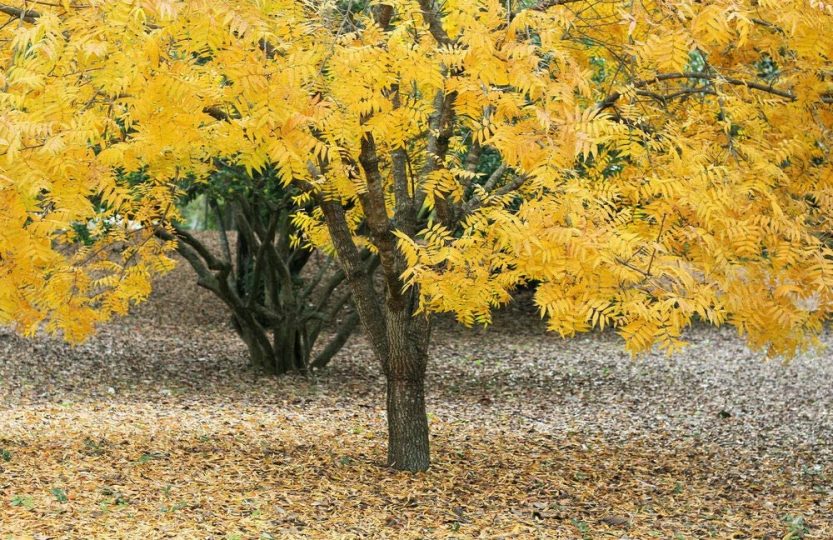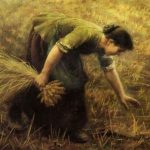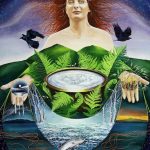Happy Halloween! For ancient Celts, this day of Samhain (sow -en) marked a pause between the end of one year and the beginning of the next. It was a crack in time that allowed spirits of the departed and fairy folk to walk abroad freely. Ordinary humans huddled inside for safety. Such behavior has a familiar ring in this pandemic-ridden world. In southern New England we are clearing away snow–the earliest snow-fall in my memory–as we prepare for a Halloween without trick-or-treating because of Covid-19 and with anxious hearts because of the upcoming election. All under a full moon–the first on this night since 1955. There is nothing normal about Halloween this year, but of course it’s 2020!
Jack-o-lanterns guard our thresholds from wandering spirits or interloping viruses as we celebrate All Hallows Eve, All Saints Day (November 1) and All Souls Day and the Day of the Dead (November 2). Tis the season of abundance and early dark. Our instincts call us together while pandemic precautions keep us apart. On the mantle, we place photographs that hold precious memories of those now beyond our embrace. Sharp pangs of grief lacerate many socially-distanced holiday celebrations as families gather on Zoom.
Aware of the collective grief and anxiety of this time, we as crones can offer perspective and grounding to others. The richly textured landscape of late autumn is our time of year. There is no formula for growing old, but circumstances which leave us with an abundance of solitude can be an opportunity to listen to the rhythm of our heart’s song. Old age is not as I imagined it in my youth: a monochromatic landscape of false teeth, sensible shoes, and avid enjoyment of re-runs of the Lawrence Welk Show. As my life stretches beyond my seventieth decade, I realize my eighties and nineties, which once loomed like far distant mountains, soon will become the undulating terrain beneath my feet.
Our crone years, like autumn walks, can surprise us with spontaneous bursts of wonder. Tree-root engendered declivities on the sidewalk become cauldrons simmering with red orange brews while the steady drip of yellow leaves from a honey locust spreads Van Gogh sunshine on red brick pavement. If you come across a long brown locust seed pod, shake it and listen to its rattle promising re-birth.
When deciduous trees, prompted by reduced sunlight, stop churning out chlorophyll, their leaves show their true colors of red, yellow, and orange in a glorious culmination of the growing season. Now that we crones no longer power creation with estrogen, what true colors might emerge from within us?
A friend who is an avid gardener, recalls being three years old and playing among the flowers while her father tended his large garden. She found nature to be a haven from a clamorous household and demanding parents. In the garden, being herself was enough.
We all need places where being ourselves is enough. Do you have such a place? How can we restore the freedom, abundance, and joy that comes into our lives from pursuing our passions with an unfettered heart? As crones, it is time to lavish love upon ourselves. For me, and I suspect for others, there are barriers to doing this. I want to ferret out deeply lodged thorns of unworthiness that fester deep within old-growth layers of my mind. It is past time to honor the rightness, not the wrongness, of ourselves. To love ourselves is to honor the divine within, and as we bring healing to ourselves, we increase our capacity to love others and to see divine light shining through them as well.
The hag of winter, who guards the land during its time of rest, renewal, and dormancy, rouses herself into action at Samhain. This guardian of the dark and cold is the wise woman of the mountains. She is the witch, who with her tall hat and broomstick, rides between the worlds, communicates with the spirits, and predicts the future. (She may be called upon to preside over a few American Ouija boards this Halloween, for inquiring minds want to know–who will win the election.)
In the ancient classical world, she was Hekate, the goddess of the crossroads and all liminal spaces. She carried torches to see in the dark. We are in her presence now, as death hovers near and fears for the future of a country and a planet contract our hearts. Torch light is our companion in these uncertain times as we wait for whatever new normal will emerge. A line in Louise Glück’s poem “Cana,” from her book Meadowlands, captures this idea of transformation. Penelope asks Odysseus “Then/ what will we see by, /now that the yellow torches have become green branches?”
We crones are torch bearers with all our life experience transformed into light. But the day will come when our torches are extinguished, and our daughters, granddaughters, or nieces will place our photographs on their ancestor altars, and the green branches they bear now will become torches for the next generation to see by.
As the full moon rises on All Hallows Eve, may you glory in the splendor of your being and let your colorful leaves shine as beacons of wisdom.
May the torch of Hekate guide your way home.
Warm blessings,
Melody



